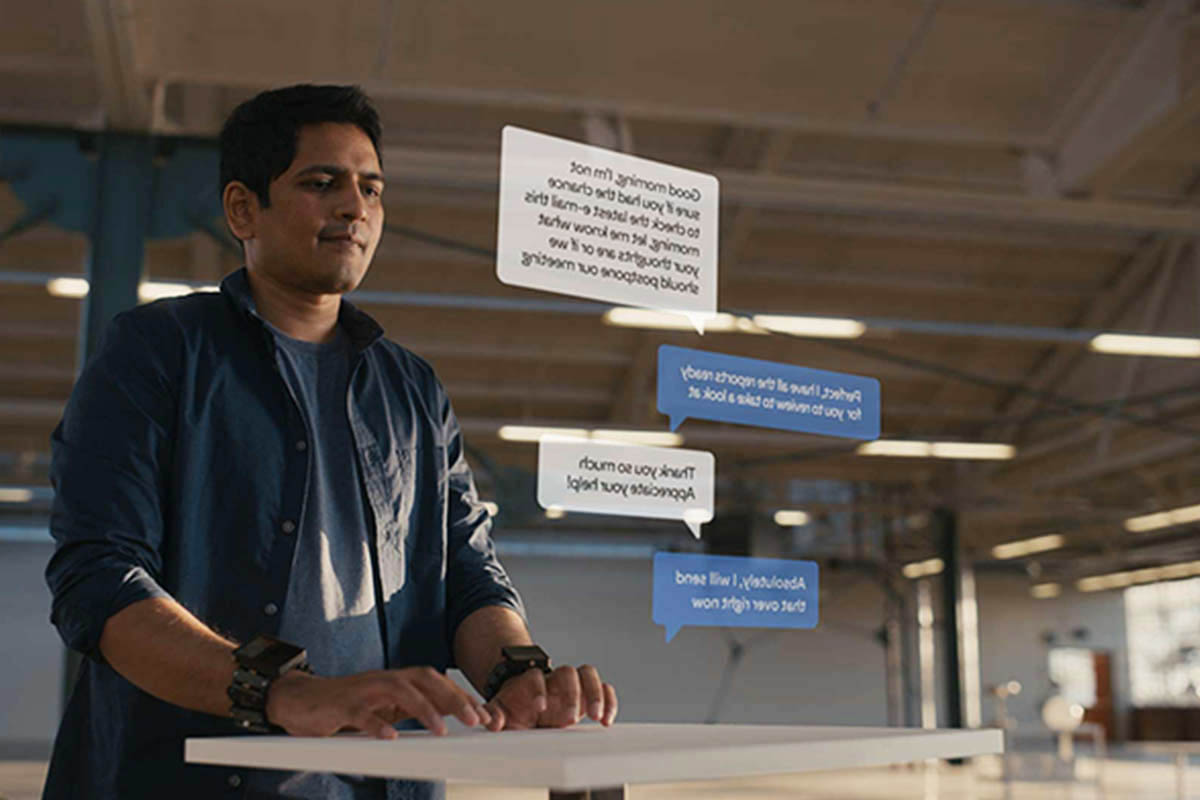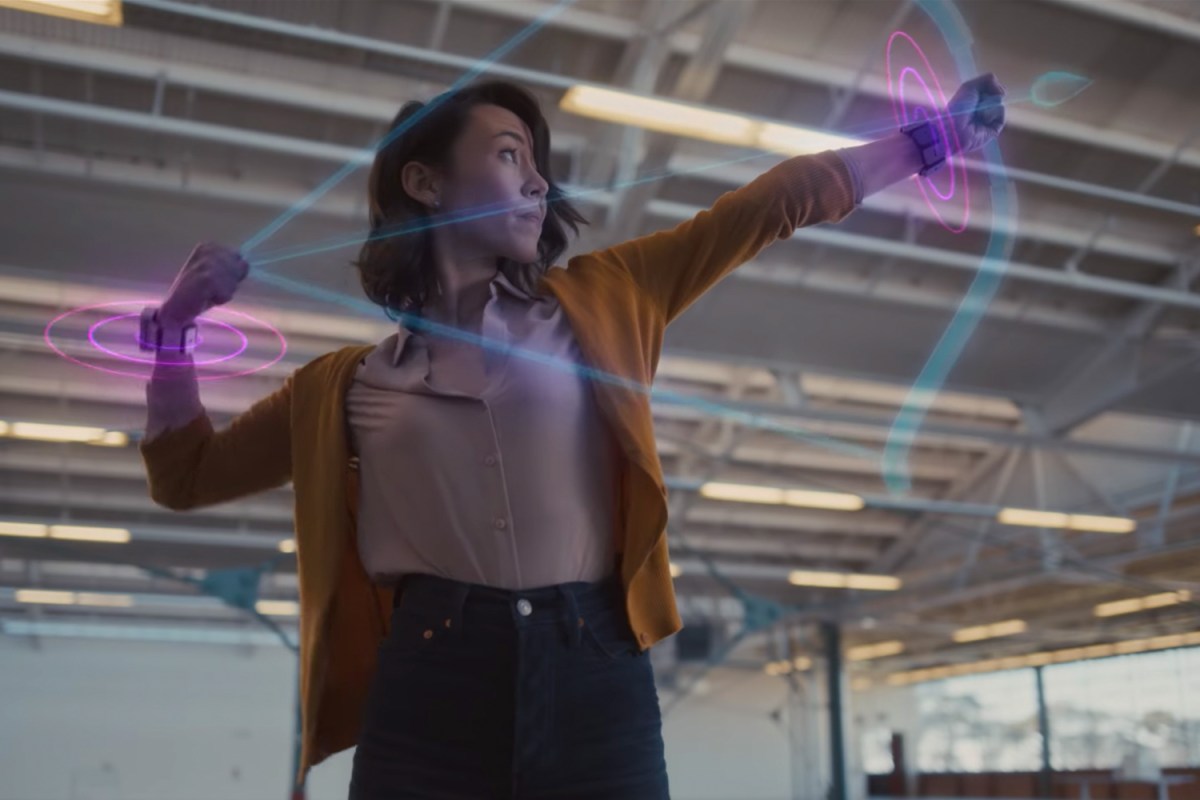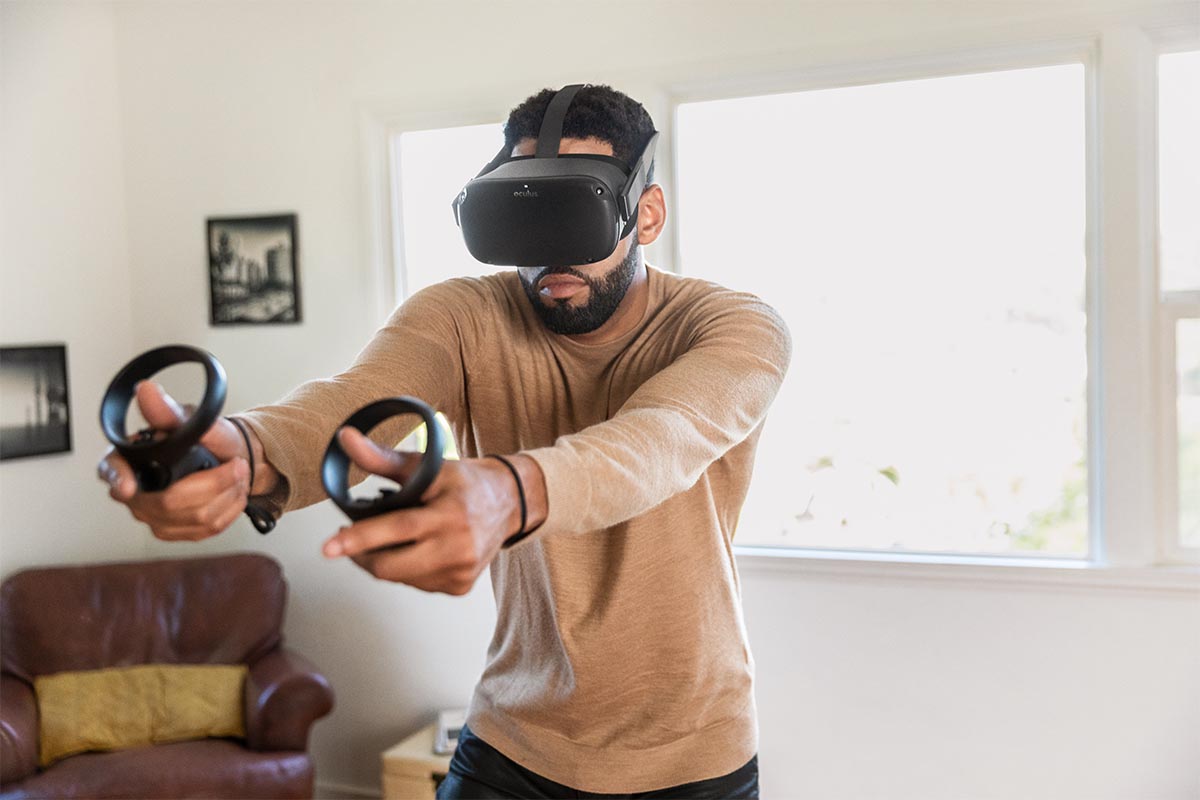Outside of a few popular games, augmented reality hasn’t become mainstream reality. But Facebook Reality Labs (FRL) Research thinks they have a possible solution: get your wrists involved.
In a recent Facebook Tech blog post, the FRL team suggests that a near-future possibility for AR would involve a mixture of wristbands and a more limited AI that could “contextualize” and predict your actions.
The wrist was chosen because it provides greater privacy over voice commands and an easier experience than pulling out a phone or a controller, and because of its location near your hands, which a majority of people are using everyday (for those born without or unable to utilize their arms or hands, the research teams says they’ve taken that into the development process).
In the Facebook (and Oculus) world, you’d combine these wrist wearables with EMG (electromyography), which “uses sensors to translate electrical motor nerve signals that travel through the wrist to the hand into digital commands that you can use to control the functions of a device.” Basically, finger motions of even just a millimeter could be contextualized and deciphered.
“This is not akin to mind reading,” they write. “This is about decoding those signals at the wrist — the actions you’ve already decided to perform — and translating them into digital commands for your device. It’s a much faster way to act on the instructions that you already send to your device when you tap to select a song on your phone, click a mouse, or type on a keyboard today.”

The eventual results: Moving virtual objects with ease, faster, as well as more accurate virtual typing that “morphs” to your typing style, micro-gesture controls for your devices, and, with the help of haptic feedback, the feeling that you’re actually doing something in the real world even if it’s virtual. The example they give: Shooting off a virtual arrow.
“From your first grasp at birth all the way to dexterous manipulation of objects and typing on a keyboard, there’s this really rich feedback loop, where you see and do things with your hands and fingers and then you feel sensations coming back as you interact with the world,” says FRL Research Science Director Sean Keller. “We’ve evolved to leverage those haptic signals to learn about the world. It’s haptics that lets us use tools and fine control. From a surgeon using a scalpel to a concert pianist feeling the edges of the keys — it all depends on haptics. With a wristband, it’s the beginning.”
Thanks for reading InsideHook. Sign up for our daily newsletter and be in the know.
















